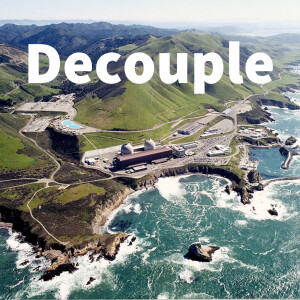
Canada, Climate, CANDU & Canoes feat. Jeremy Whitlock
 2021-02-17
2021-02-17
Due to the global geopolitics of the 1940's Canada became the unlikely centre for the world's second largest nuclear research infrastructure at the end of World War II. Devoting itself to the peaceful use of the atom It went on to develop a unique power reactor design, the CANDU, based on the use of heavy water to avoid the need for uranium enrichment and pressure tubes to get around the need for a heavy forging industry for reactor vessels. These features make the CANDU ideal for export and technology transfer to less developed countries with industrial capacity resembling that of Canada back in the 1960's.
CANDU reactors provide 61% of the power for the Ontario grid, the largest province in Canada, making it one of the cleanest electricity grids on earth and allowing for the complete phaseout of coal. CANDU has been exported internationally and delivered on budget and on time in China, South Korea and Romania. Alongside it's high grade uranium deposits which are the richest in the world, Canada has a unique ability to foster a made in Canada reponse to climate change. It can export its ultra low carbon technology to address its climate debt by helping developing countries to leapfrog fossil fuels on their way to ultra low carbon energy.
CANDU meets many of the criteria for an advanced reactor design with passive safety elements, modular design, and the ability to use nuclear waste as fuel. Why then is CANDU languishing especially in a country where the supply chain is 95% in country?
Dr. Jeremy Whitlock former president of the Canadian Nuclear Society and Section Head of the Dept of Safegaurds at the IAEA walks us through this incredible history. He is the brains behind nuclearfaq a treasure trove on the history of nuclear energy in Canada. http://www.nuclearfaq.ca/
More Episodes
 2022-01-31
2022-01-31
 2022-01-24
2022-01-24
 2022-01-20
2022-01-20
 2022-01-17
2022-01-17
 2022-01-10
2022-01-10
 2021-12-31
2021-12-31
 2021-12-31
2021-12-31
 2021-12-28
2021-12-28
 2021-12-24
2021-12-24
 2021-12-22
2021-12-22
 2021-12-19
2021-12-19
 2021-12-14
2021-12-14
 2021-12-06
2021-12-06
 2021-12-03
2021-12-03
 2021-11-25
2021-11-25
 2021-11-18
2021-11-18
 2021-11-15
2021-11-15
Create your
podcast in
minutes
- Full-featured podcast site
- Unlimited storage and bandwidth
- Comprehensive podcast stats
- Distribute to Apple Podcasts, Spotify, and more
- Make money with your podcast
It is Free
- Privacy Policy
- Cookie Policy
- Terms of Use
- Consent Preferences
- Copyright © 2015-2024 Podbean.com




